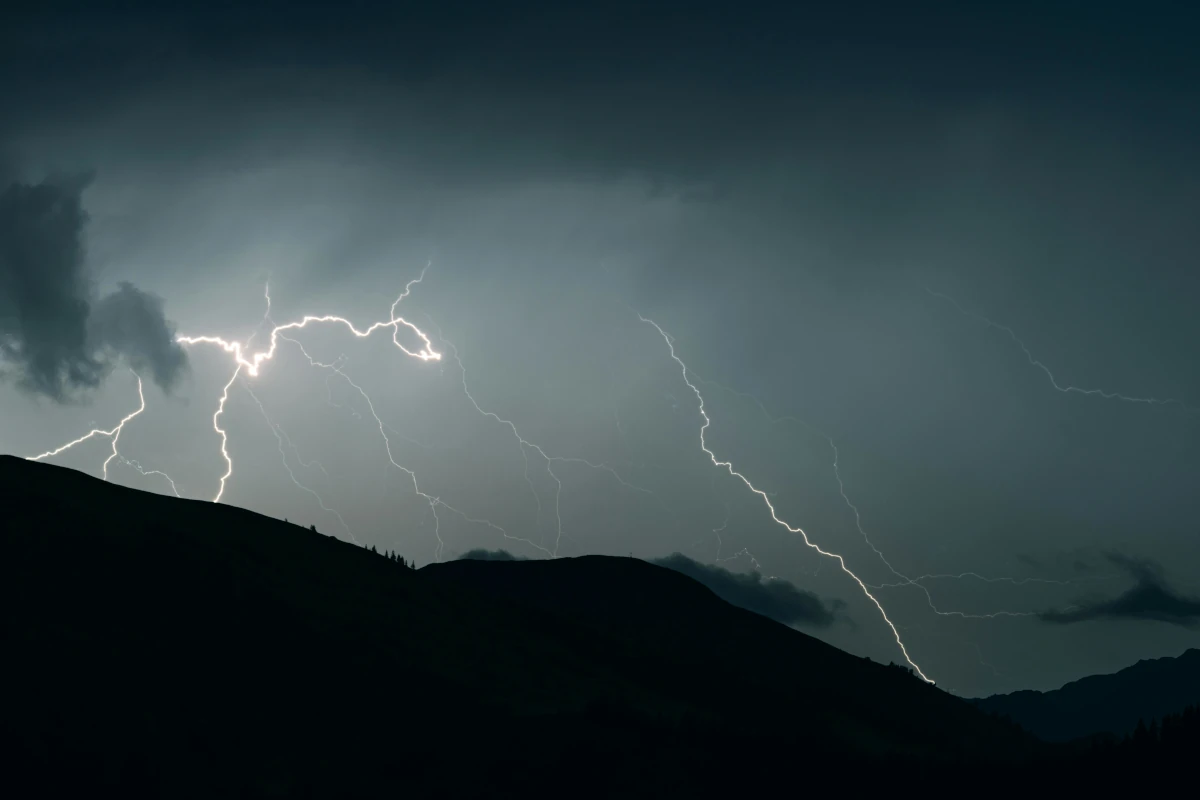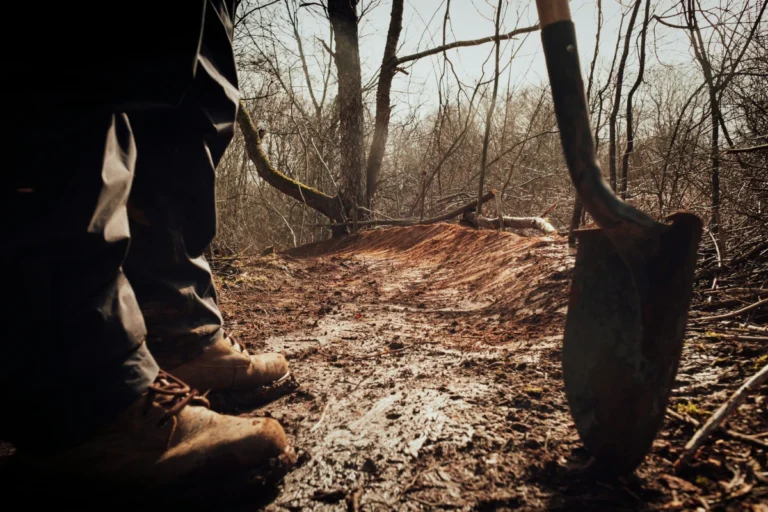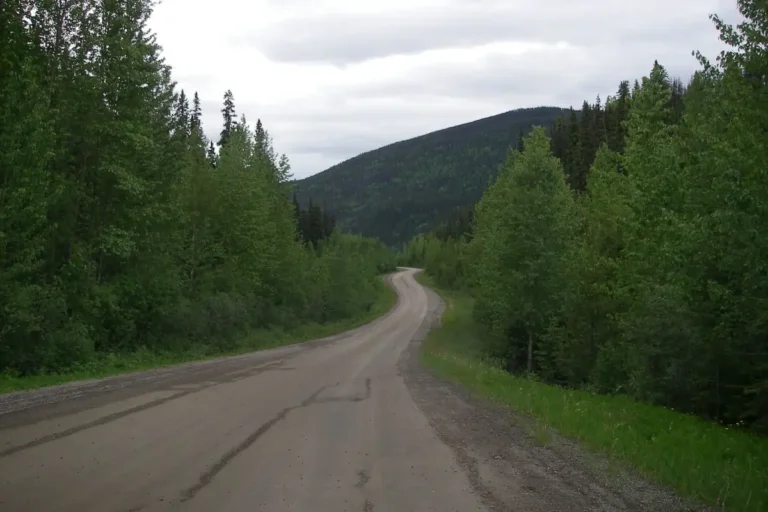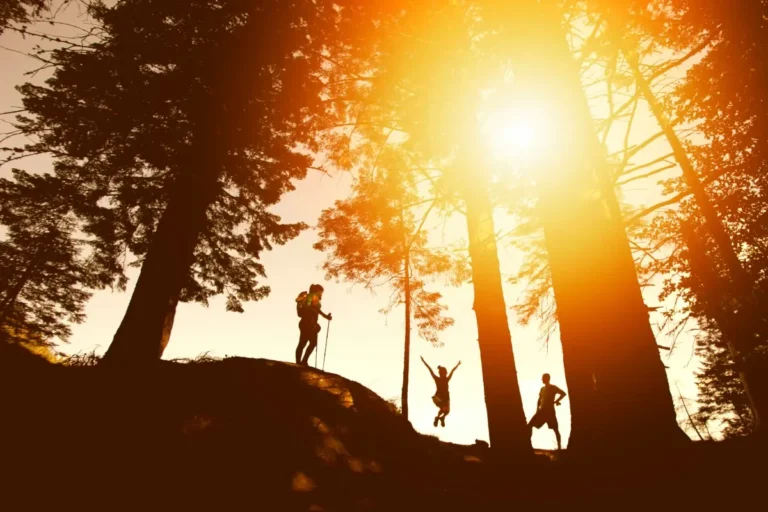Lightning Safety Outdoors: Hiking, Camping, and Kayaking Tips
In many BC First Nations stories, Thunderbird lives in the highest mountains. A giant bird large enough to catch whales in his talons, he creates thunder by flapping his great wings, and lightning flashes from his eyes. In some stories he carries two snakes beneath his wings that strike out like harpoons with lightning.
When Mt. Hozomeen came into view on the ridge of Snow Camp Mountain, I thought that it looked like a place where Thunderbird would live. It was July, and I was headed for Mowich Camp in Manning Park for an overnight backpacking trip. The weather forecast that morning had warned that there was a chance of a thunder shower, but I wasn’t worried. Half the time “a chance” meant it wouldn’t materialize at all, and the weather was partly sunny, the skies dotted with fluffy clouds that didn’t look like they could possibly produce lightning.
Descending from the ridge and into the valley bottom, I arrived at Mowich Camp at 2 pm. Not long after settling in and fetching some water, the first rumble came.
As a precaution, before my trip I’d looked up what to do when caught outside in a lightning storm. The best thing to do was to go inside, but aside from the outhouse that was sitting in the middle of an open field with a metal roof, there was nowhere to go. Some things I’d read said to stand in trees of uniform height and assume a crouch position. So that’s what I did, crouching in the woods as thunder and lightning raged above, the storm coming through in waves.
On the best of days, I’m frightened of thunderstorms. To have one unleashing hell very close by was nothing short of terrifying. Eventually, I went into a sort of fear-driven trance, talking to myself reassuringly. It’s not forever; it’s just for right now. I kept my eyes on a bit of blue sky in a gap in the trees, willing it to come closer. I crouched there for the better part of two hours until the storm finally passed by.
Since then, I wondered if I’d done the right thing, if there was anything else I could have done differently to protect myself. A recent seminar about lightning safety in the outdoors put on by AdventureSmart for their summer series answered that question.
When thunder roars, go indoors.
How Lightning Works
Lightning is an electrical discharge caused by imbalances between storm clouds and the ground, or within the clouds themselves. During a thunderstorm, strong winds within clouds create areas of positive and negative charge. The bottom of the cloud builds up a negative charge, while the top becomes positively charged. In response, the ground below becomes positively charged.
Negative charges in the cloud are attracted to positive charges on the ground. A “downward leader” of negative charge extends from the cloud toward the ground. An “upward leader” of positive charge rises from the ground, often from tall objects. When the leaders connect, an electrical current flows through the channel as a visible lightning bolt.
How Lightning Injures People
| Type | Percentage of Cases |
|---|---|
| Ground current (strikes ground nearby and travels along ground) | 40-50% |
| Side flash (strikes object nearby and flashes outwards) | 20-30% |
| Contact (a person is in contact with struck object) | 15-25% |
| Upward leaders (the positive charge from ground) | 10-15% |
| Direct strike (hit directly by lightning) | 3-5% |
| Blunt trauma (branches, thrown by shock wave) | unknown |
Lightning in British Columbia
In British Columbia, lightning is most common in the northeast and southeast areas of the province. It is most common in the summer months, peaking in July. The farther you move west, the less frequent lightning becomes. On the coast, lightning can occur at any time of year, and on the outer coast, winter is the most common time for it to occur.
Thunderstorms most commonly happen in the midafternoon, at the warmest time of day. They peak in the evenings. If a thunderstorm is forecast on a day you expect to be hiking, plan to be at lower elevations and ideally off the trail by 2 pm.
Where is the Safest Place?
Indoors: The safest place is inside a building with wiring and plumbing. Stay away from electronics and windows until the storm passes.
In Vehicles: In metal, closed-top vehicles, the frame conducts the electricity around you like a Faraday cage.
You are not safe anywhere outdoors during a lightning storm. It doesn’t matter if you’re under a tall tree, a short tree, a group of trees, a forest, a tent, or a field. Unsafe places also include picnic shelters, outhouses, tents, under trees, and small buildings. It makes no difference where you are or what position your body is in.
Since lightning often connects with taller objects, you are at higher risk if you are near these objects. Being on mountains or ridges when there is a thunderstorm is especially dangerous. If you hear thunder when you’re at a higher elevation, immediately descend to a lower elevation. Do not stop to seek shelter under trees.
Stay in shelter for at least 30 minutes after the last peal of thunder. Most lightning-related injuries occur at the beginning and end of the storm.
Lightning Safety on the Trail
Trip Planning:
- Check the weather forecast.
- Check mountain weather forecasts. Most weather forecasts are for lower elevations, and mountain weather differs from that on the valley bottom.
- Be flexible with your plans and itinerary for the day.
- Go to a different area at a lower elevation.
- Aim to be at lower elevations by 2 pm on days with storm potential.
On the Trail:
- Keep an eye on the sky for cumulonimbus clouds that are developing vertically.
- Know where potential shelters are on your route.
- Avoid exposed peaks and ridges.
- Proceed immediately to a lower elevation if you hear thunder.
- Avoid camping in exposed areas, near lone trees, tall trees, or on ridgelines.
- Begin CPR if someone in your party is struck by lightning and suffers cardiac arrest.
- If you feel a charge like static electricity, you are in the path of a strike and in extreme danger. Leave the area immediately.
Lightning Myths and Facts
Myth: Rubber soles or tires protect you.
Fact: They do not. It’s the metal vehicle frame that offers protection, not the tires.
Myth: The crouch position protects you.
Fact: The crouch is no longer recommended. It offers no real protection.
Myth: Metal objects attract lightning.
Fact: Metal doesn’t attract lightning, but it conducts electricity if struck.
Lightning Safety on the Water
Trip planning:
- Check the weather forecast in the morning, and if a thunderstorm is expected, cancel or delay your trip.
- If you’re in an area with marine weather forecasts, bring a VHF radio and monitor the Canadian Coast Guard Continuous Marine Broadcast. The forecast is updated four times per day at 04:00, 10:30, 16:00, and 21:30. It plays in a loop on the radio throughout the day and changes when updated.
On the Water:
- If you hear thunder, head for shore immediately and get off the water. Since a boat is the tallest object on the water, you are in extreme danger if caught out in a thunderstorm.
- A thunderstorm may come with high wind and waves. You are most stable paddling into the wind and cutting the waves rather than having them hit you broadside.
- Once on shore, if possible shelter inside a large building with plumbing and electricity or a fully enclosed vehicle.
- Stay sheltered for 30 minutes after the last rumble of thunder.
What About RVs?
Not all RVs are created equal when it comes to lightning safety. RVs with steel or aluminum framing should offer protection similar to a car. Those made with fibreglass and wood, pop-up campers, and soft-sided trailers offer no protection. If you’re in an RV and can’t reach a grounded building, stay inside, avoid touching metal, unplug from power, and wait out the storm.
Lightning and Wildfires
On average, lightning causes 60 percent of the wildfires in our province. In rare cases, people have been trapped by newly ignited wildfires started by lightning. Fires can smolder for hours before flaring up, and wind-driven flames can cut off trails or exits before hikers or campers are aware. Always be aware of wildfire risk in the region you’re traveling in, especially during lightning storms after long dry spells. See the BC Wildfire Service for danger ratings, an up-to-date wildfire map, and a link to their mobile app.
Large wildfires can also create pyrocumulus clouds, which generate their own weather systems. These clouds can produce lightning strikes kilometres away from the actual fire.
Lessons Learned
Looking back on my experience, I can see exactly where I went wrong. When saw that the forecast called for a chance of a thundershower, I should have cancelled my plans and stayed home.
Going into the forest and assuming the crouch position did nothing to make me safe. In fact, the crouch is no longer recommended at all because it doesn’t do anything to protect you. As for the trees, the bottom line is that you’re not safe outdoors when there’s lightning. Under a tall tree, a stand of trees, and open field, a picnic shelter or outhouse, it doesn’t matter. You are not safe. I certainly felt that way.
Though the camp I was in was at a valley bottom, I knew that you shouldn’t be up on top of a ridge or mountain during a thunderstorm. When I was crouching there, it seemed so much worse farther up, closer to the sky, and I was glad I was down below.
On a bluebird day the next morning, I set out for home. There was fresh dew on the meadow, the bright green a stunning contrast to the blue sky. As I walked, I observed that the spires of Mt. Hozomeen looked like they could be a cradle for a giant bird nest. Or perhaps they form the wings of the Thunderbird lifting up as he rises to the sky and flaps his great wings. Silently thanking him for not striking me with his lightning-bolt eyes, I turned for home.
For more true tales from the wilderness, check out our Real Stories section to explore more real-life outdoor adventures and history.





